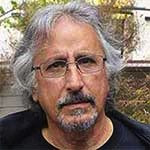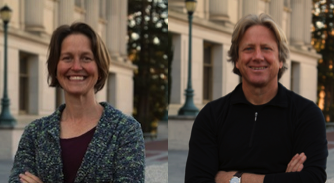Even if you don’t feel like clapping along to Pharrell Williams’ “Happy” anthem, there are skills to be learned—gratitude, forgiveness and living in the moment—that can inspire optimism in the grumpiest among us. And those teachings are being offered for free through UC Berkeley’s online “Science of Happiness” course, which relaunches Sept. 8.
So far, more than 12,000 people from around the world have signed up for GG101x: The Science of Happiness, created by the Greater Good Science Center and offered through massive open online course (MOOC) provider edX. If the feedback from several thousand students who completed the 2014 pilot program and filled out surveys is any indication, the course can improve your emotional health.
“For every measure we took, the good things, like thriving and compassion, went up, and the bad things, like stress and loneliness, went down,” says Emiliana Simon-Thomas, science director at the Greater Good Science Center, who teaches the course with UC Berkeley psychologist Dacher Keltner.
Resident skeptic to document happiness journey
 Barry Bergman, happiness student
Barry Bergman, happiness student
For an armchair view of the course, follow Barry Bergman, a writer and editor for UC Berkeley’s Office of Communications and Public Affairs. He will be sharing his experiences as a “Science of Happiness” student in his weekly blog, “Dispatches from the Happiness Front,” on the Berkeley News website.
A native of Queens, New York, Bergman casts a jaded eye on all things touchy-feely, but insists he‘s keeping an open mind.
“I’m not an unhappy person, but I don’t wake up in the morning and say a daily affirmation, either,” Bergman says. “I read the papers, watch the news, look at Twitter. I still think Belushi was right to smash that guitar in Animal House. So it’s possible I haven’t yet found the sweet spot between sociopolitical outrage and personal contentment.”
Less technical than your typical MOOCs — which sport such titles as “Data Analysis and Statistical Inference” — the eight-week class explores the roots of a happy, meaningful life through psychology, neuroscience, evolutionary biology and self-experimentation. For $99, health professionals can take the course for credit.
Assignments include practicing mindfulness, counting one’s blessings, writing letters of self-compassion and forgiveness, and rating one’s emotions weekly on a scale of smiley and frowny faces.
While the bulk of this year’s enrollees hail from the United States, which ranks at No. 15, behind Mexico and Israel, on US News & World Report’s 2015 list of the world’s happiest countries, others will be taking the class from Australia, Brazil, India, the Philippines, Jordan, Saudi Arabia, Bahrain, Indonesia, Nigeria, France, Malaysia and the UK.
It’s healthy to be happy
 GG101x instructors Emiliana Simon-Thomas and Dacher Keltner
GG101x instructors Emiliana Simon-Thomas and Dacher Keltner
“It’s our mission to make this science as accessible and practical to as many people as possible, so a free MOOC helps us advance that mission,” says Jason Marsh, editor-in-chief of the Greater Good magazine, which attracts at least 380,000 unique monthly visitors.
As for the philosophy behind the course, Keltner notes that happier people live longer, make for better friends, family members and colleagues, and contribute to happier cultures with fewer social ills.
More than 120,000 people from more than 200 countries signed up for last year’s inaugural “Science of Happiness” MOOC, which ranked among Class Central’s “Ten most popular MOOCs starting in September 2014.”
And, in typical MOOC fashion, about half of those who signed up actually took the course, with 10 percent of those students sticking through to the end. About 5,000 filled out surveys rating their emotional well-being before, during and after the class, providing a sample big enough to measure the cohort’s happiness index.
The comments in the edX course review section ran the gamut. “It took me years to learn how to be miserable,” wrote one student before the course started. “I hope that just a single course will teach me how to be happy. If you can cut through major depression and severe anxiety disorder, and turn me back into the smiling, laughing person I used to be, I won’t complain much.”
One student who was disappointed by the course dismissed it as “a lot of junk science,” while another student who completed the course had more complimentary things to say:
“I came across this course while suffering from clinical depression,” the student wrote. “It took lots of determination but two months later I was taken off medication. I feel recovered, grateful, happy. I’m aware I have to keep working on it.”
Interestingly, the surveys showed that the assignments students resisted most, such as writing letters of self-compassion, gratitude, and forgiveness, had the greatest impact on those who completed them.
This fall’s revised “Science of Happiness” is designed to be more user-friendly and less time-consuming than the inaugural class. “We got a lot of feedback and we’re taking it to heart,” Simon-Thomas says.
That said, students actually have to do the assignments to reap the benefits: “If you try it, it works, but you have to try it,” she says.
Did you catch that, Barry?



Comments